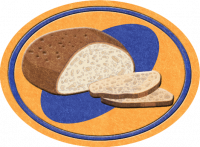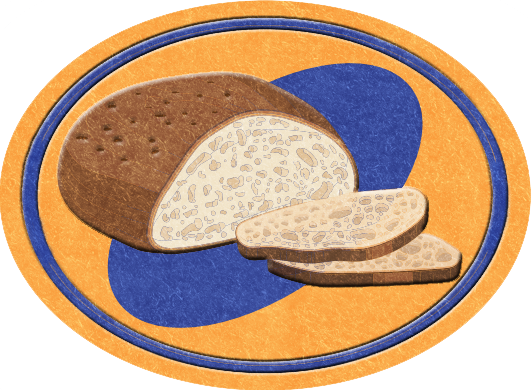Difference between revisions of "AY Honors/Sourdough/Requirements"
(+ Reqs. for Sourdough AY Honor from the Australian Union Conference) |
(Marked this version for translation) |
||
| Line 3: | Line 3: | ||
<section begin=Body /> | <section begin=Body /> | ||
| − | <b>1. <section begin=req1 /><noinclude><translate></noinclude>Research and present a brief history of sourdough. Include information on its origins, how it was traditionally used, and its significance in different cultures. | + | <b>1. <section begin=req1 /><noinclude><translate><!--T:1--> |
| + | </noinclude>Research and present a brief history of sourdough. Include information on its origins, how it was traditionally used, and its significance in different cultures. | ||
<noinclude></translate></noinclude><section end=req1 /></b> | <noinclude></translate></noinclude><section end=req1 /></b> | ||
| − | <b>2. <section begin=req2 /><noinclude><translate></noinclude>Identify and describe at least five different types of sourdough bread. Include information on their unique characteristics and regional variations. | + | <b>2. <section begin=req2 /><noinclude><translate><!--T:2--> |
| + | </noinclude>Identify and describe at least five different types of sourdough bread. Include information on their unique characteristics and regional variations. | ||
<noinclude></translate></noinclude><section end=req2 /></b> | <noinclude></translate></noinclude><section end=req2 /></b> | ||
| − | <b>3. <section begin=req3 /><noinclude><translate></noinclude>Look up and discuss at least two Bible verses that mention bread or leaven. Reflect on their significance and what they can teach us about the importance of sharing food. | + | <b>3. <section begin=req3 /><noinclude><translate><!--T:3--> |
| + | </noinclude>Look up and discuss at least two Bible verses that mention bread or leaven. Reflect on their significance and what they can teach us about the importance of sharing food. | ||
<noinclude></translate></noinclude><section end=req3 /></b> | <noinclude></translate></noinclude><section end=req3 /></b> | ||
| − | <b>4. <section begin=req4 /><noinclude><translate></noinclude>Learn how to make a sourdough starter from scratch. Document the process over a week, including the ingredients used, daily feedings, and observations of the starter’s development. | + | <b>4. <section begin=req4 /><noinclude><translate><!--T:4--> |
| + | </noinclude>Learn how to make a sourdough starter from scratch. Document the process over a week, including the ingredients used, daily feedings, and observations of the starter’s development. | ||
<noinclude></translate></noinclude><section end=req4 /></b> | <noinclude></translate></noinclude><section end=req4 /></b> | ||
| − | <b>5. <section begin=req5 /><noinclude><translate></noinclude>Understand how to feed and maintain a sourdough starter. Learn the differences between keeping a starter at room temperature and storing it in the refrigerator. Practice feeding your starter regularly and keeping it healthy. | + | <b>5. <section begin=req5 /><noinclude><translate><!--T:5--> |
| + | </noinclude>Understand how to feed and maintain a sourdough starter. Learn the differences between keeping a starter at room temperature and storing it in the refrigerator. Practice feeding your starter regularly and keeping it healthy. | ||
<noinclude></translate></noinclude><section end=req5 /></b> | <noinclude></translate></noinclude><section end=req5 /></b> | ||
| − | <b>6. <section begin=req6 /><noinclude><translate></noinclude>Explore different ways to use excess sourdough starter. Try at least three recipes that use sourdough discard, such as pancakes, waffles, or crackers. Document your experiences and share the recipes with your group. | + | <b>6. <section begin=req6 /><noinclude><translate><!--T:6--> |
| + | </noinclude>Explore different ways to use excess sourdough starter. Try at least three recipes that use sourdough discard, such as pancakes, waffles, or crackers. Document your experiences and share the recipes with your group. | ||
<noinclude></translate></noinclude><section end=req6 /></b> | <noinclude></translate></noinclude><section end=req6 /></b> | ||
<section begin=challenge /> | <section begin=challenge /> | ||
| − | <b>7. <section begin=req7 /><noinclude><translate></noinclude>Learn the steps involved in baking a loaf of sourdough bread. This includes mixing the dough, fermenting, shaping, proofing, and baking. Bake at least two loaves of sourdough bread and document the process and results. | + | <b>7. <section begin=req7 /><noinclude><translate><!--T:7--> |
| + | </noinclude>Learn the steps involved in baking a loaf of sourdough bread. This includes mixing the dough, fermenting, shaping, proofing, and baking. Bake at least two loaves of sourdough bread and document the process and results. | ||
<noinclude></translate></noinclude><section end=req7 /></b> | <noinclude></translate></noinclude><section end=req7 /></b> | ||
<section end=challenge /> | <section end=challenge /> | ||
| − | <b>8. <section begin=req8 /><noinclude><translate></noinclude>Experiment with adding different ingredients to your sourdough bread, such as seeds, nuts, dried fruit, or herbs. Bake a loaf with your chosen additions and share it with your group. | + | <b>8. <section begin=req8 /><noinclude><translate><!--T:8--> |
| + | </noinclude>Experiment with adding different ingredients to your sourdough bread, such as seeds, nuts, dried fruit, or herbs. Bake a loaf with your chosen additions and share it with your group. | ||
<noinclude></translate></noinclude><section end=req8 /></b> | <noinclude></translate></noinclude><section end=req8 /></b> | ||
<section end=Body /> | <section end=Body /> | ||
Latest revision as of 23:22, 19 August 2025
1. Research and present a brief history of sourdough. Include information on its origins, how it was traditionally used, and its significance in different cultures.
2. Identify and describe at least five different types of sourdough bread. Include information on their unique characteristics and regional variations.
3. Look up and discuss at least two Bible verses that mention bread or leaven. Reflect on their significance and what they can teach us about the importance of sharing food.
4. Learn how to make a sourdough starter from scratch. Document the process over a week, including the ingredients used, daily feedings, and observations of the starter’s development.
5. Understand how to feed and maintain a sourdough starter. Learn the differences between keeping a starter at room temperature and storing it in the refrigerator. Practice feeding your starter regularly and keeping it healthy.
6. Explore different ways to use excess sourdough starter. Try at least three recipes that use sourdough discard, such as pancakes, waffles, or crackers. Document your experiences and share the recipes with your group.
7. Learn the steps involved in baking a loaf of sourdough bread. This includes mixing the dough, fermenting, shaping, proofing, and baking. Bake at least two loaves of sourdough bread and document the process and results.
8. Experiment with adding different ingredients to your sourdough bread, such as seeds, nuts, dried fruit, or herbs. Bake a loaf with your chosen additions and share it with your group.



